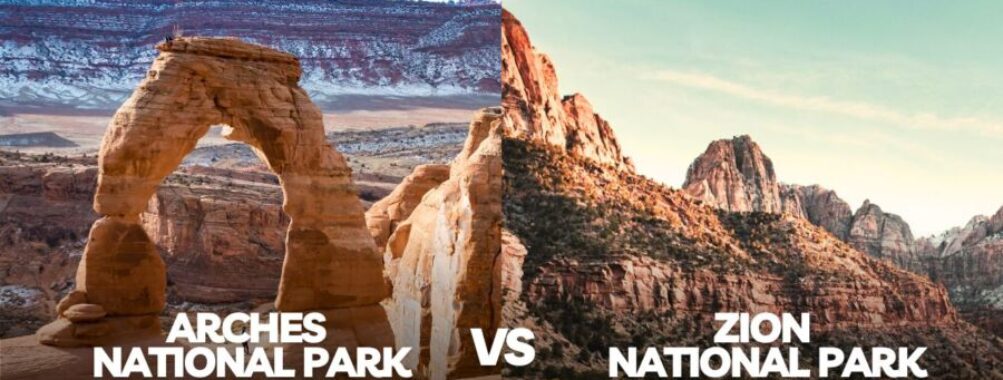
Arches National Park vs Zion National Park: 7 Stunning Differences to Plan Your Ultimate Utah Adventure
Choosing between Arches National Park and Zion National Park can be tough for travelers planning a Utah adventure. These two natural wonders offer different experiences that appeal to various outdoor enthusiasts.
Arches National Park is better for visitors with limited time as it’s easier to navigate. At the same time, Zion National Park offers more variety in landscapes and hiking trails for those who can stay longer.
Both parks draw large crowds, especially during peak seasons. Arches showcase over 2,000 natural stone arches and unique rock formations that visitors can view from scenic drives with short walks. Meanwhile, Zion features massive canyon walls, emerald pools, and the famous Narrows hike, where visitors wade through the Virgin River.
Consider your time constraints and interests for travelers torn between these two spectacular destinations. Those with just a day might prefer Arches, while visitors with several days would benefit from Zion’s diverse offerings. Many travelers ultimately decide to visit both parks as part of a larger Utah National Parks road trip.
Contents
- Overview of Arches National Park
- History and Significance
- Iconic Landmarks
- Visitor Facilities
- Exploring Zion National Park
- Park Attractions
- Hiking and Adventure
- Local Communities
- Outdoor Activities and Hiking Trails
- Popular Trails in Arches
- Zion’s Hiking Experiences
- Adventure Beyond the Parks
- Comparative Analysis
- Natural Beauty and Scenery
- Accessibility and Crowds
- Facilities and Amenities
- Accommodation and Lodging
- Staying in Moab
- Lodging Near Zion
- Camping Options
- Travel Tips and Itinerary Planning
- Designing Your Visit to Arches
- Exploring Zion’s Wonders
- Surroundings and Day Trips
- Conservation and Preservation
- Environment and Wildlife
- Visitor Impact
- Park Rules and Regulations
- Seasonal Events and Activities
- Winter in the National Parks
- Summer Adventures
- Spring and Fall Visitations
- Wildlife and Flora
- Ecosystems in Arches
- Biodiversity in Zion
- Frequently Asked Questions
- What are the key differences in landscapes between Arches and Zion National Parks?
- How does the hiking experience compare to Zion National Park and Arches National Park?
- What is the best time of year to visit both Zion and Arches National Parks for optimal weather and crowd avoidance?
- What are the travel tips for visiting Arches and Zion National Parks on one trip?
- Can you recommend unique activities in Arches and Zion National Parks that offer a mix of adventure and relaxation?
- How do the wildlife and natural conservation efforts differ between Zion and Arches National Parks?
- More Travel Guides
Overview of Arches National Park
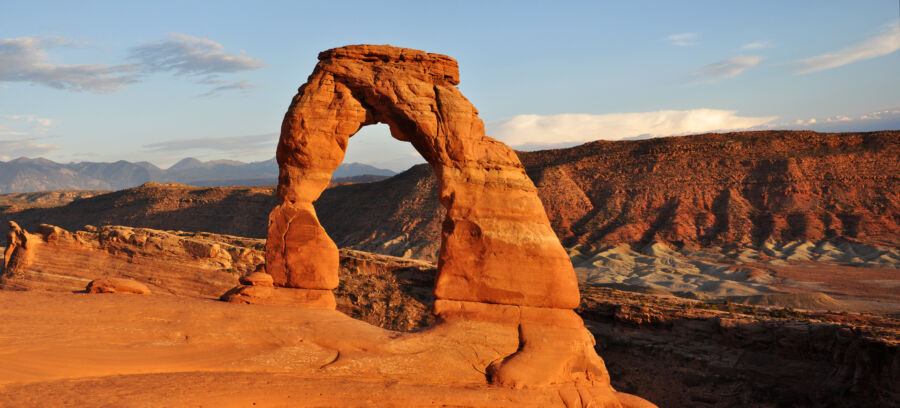
Arches National Park is a stunning desert landscape located near Moab, Utah. Famous for its unique red rock formations, this park offers visitors an unforgettable experience with over 2,000 natural stone arches and countless other geological wonders.
History and Significance
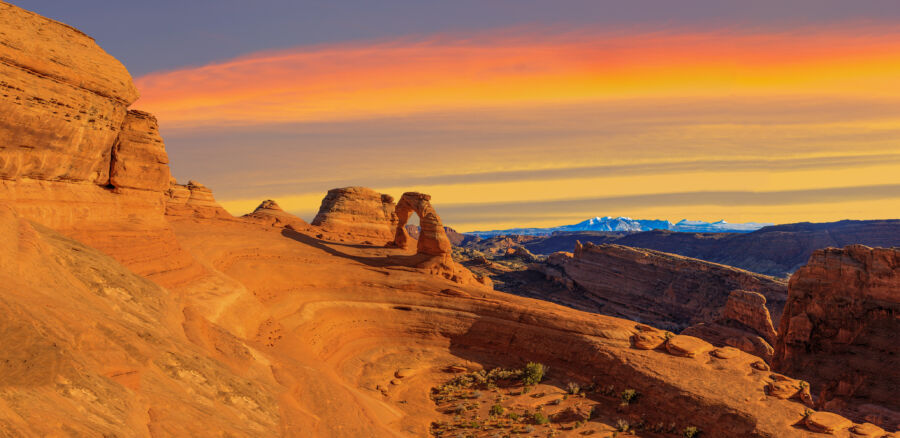
Arches were first designated a national monument in 1929 and later became a national park in 1971. Native Americans lived in this region for thousands of years before European settlers arrived, and the Ute and Paiute tribes considered this land sacred.
Geology and climate formed the park’s unusual landscape over millions of years. Erosion slowly carved away at sandstone layers, creating the incredible arches we see today. This ongoing process means the park is always changing – some arches have collapsed in recent decades while new ones slowly form.
Arches play a vital role in preserving a unique ecosystem that supports desert wildlife and plant species that have adapted to the harsh conditions. The park’s scientific importance matches its cultural significance in the American Southwest.
Iconic Landmarks
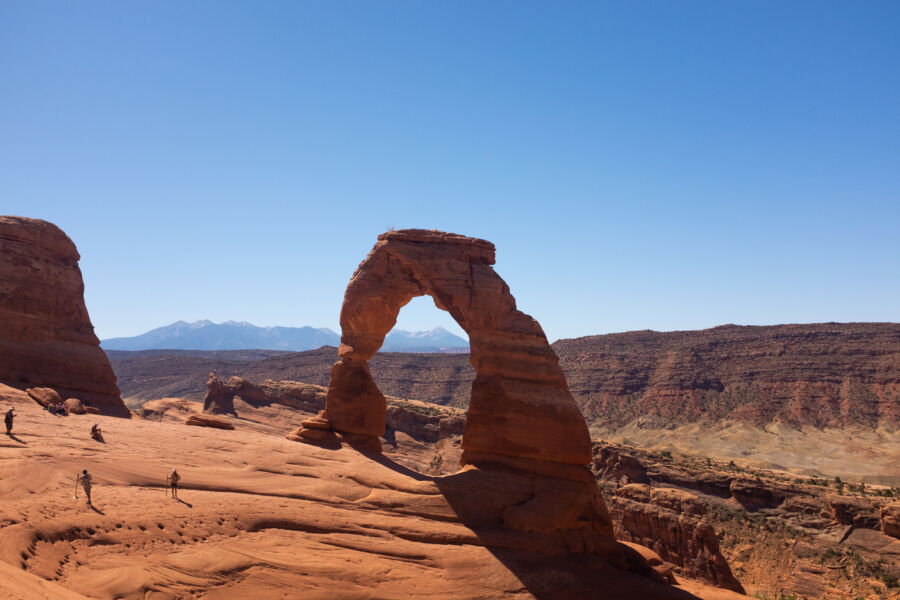
The Delicate Arch is the park’s most famous feature and has become a symbol of Utah itself. This freestanding 65-foot arch draws photographers from around the world, especially at sunset, when the red rock glows dramatically.
Balanced Rock is another must-see attraction—a massive boulder perched precariously atop a narrow pedestal. Though it’s stood this way for centuries, it looks like it might topple over at any moment.
The Fiery Furnace Hike offers adventurous visitors a maze-like experience through narrow sandstone canyons and passages. Due to its challenging navigation, this area requires either a guide or a special permit.
Other notable features include the Landscape Arch (one of the longest natural arches in the world), the Double Arch, and the Windows Section with its cluster of large arches. Each formation tells a different story about the park’s geological history.
Visitor Facilities
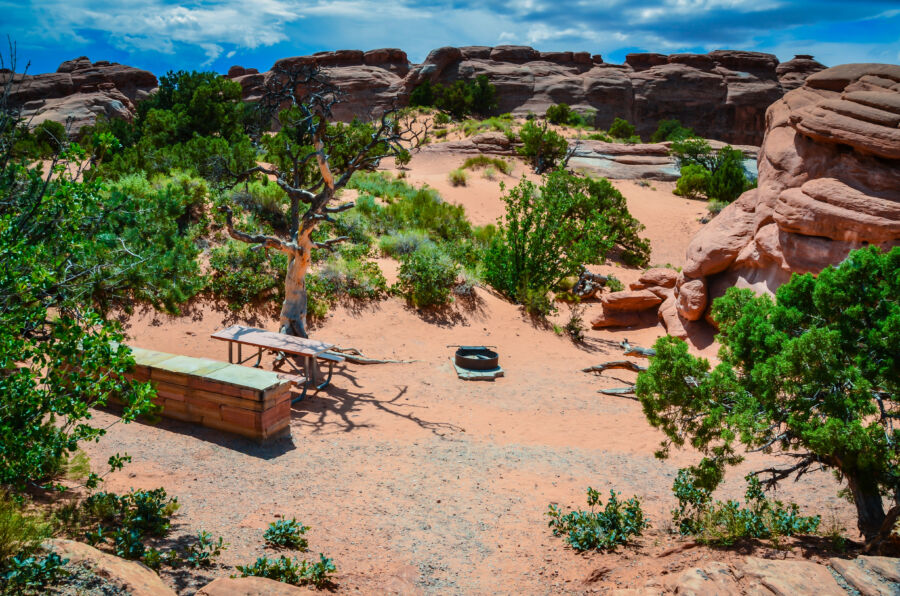
Near the entrance, the park’s visitor center provides maps, exhibits, and helpful rangers who can answer questions. It’s a smart first stop to plan your visit and learn about current conditions.
Arches has one main campground, Devils Garden, with 51 sites that often fill quickly in peak season. Reservations are highly recommended between March and October. The nearby town of Moab offers additional lodging options, from hotels to campgrounds.
Water is scarce in the park, so visitors should bring plenty. The visitor center has water bottle filling stations, but facilities elsewhere are limited.
Several picnic areas with tables and restrooms are scattered throughout the park. The main scenic drive is 18 miles long and has numerous pullouts and viewpoints. Hiking trails range from easy walks suitable for families to challenging treks requiring scrambling over Slickrock.
Exploring Zion National Park
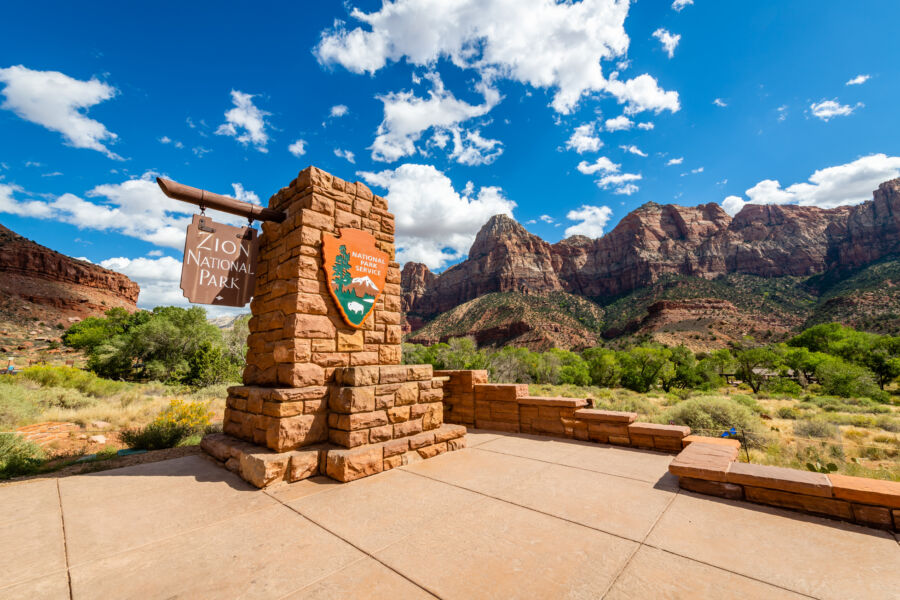
Zion National Park offers visitors a world of towering red cliffs, emerald pools, and unforgettable adventures. This stunning park in southwestern Utah draws millions of visitors annually with its unique landscape and outdoor opportunities.
Park Attractions

The crown jewel of Zion’s attractions is the Zion Canyon Scenic Drive, though it’s only accessible by shuttle bus during peak seasons. This 6-mile route winds along the Virgin River, offering spectacular views of formations like the Court of the Patriarchs and the Temple of Sinawava.
Zion’s iconic landmarks include Angels Landing, which offers breathtaking panoramic views, and the Narrows, where visitors wade through the river between towering canyon walls. The Emerald Pools trail leads to tiered pools and small waterfalls, perfect for families.
Wildlife viewing is another highlight. Throughout the park, look for mule deer, bighorn sheep, and various bird species. The Zion Human History Museum provides fascinating context about the area’s past inhabitants and geological formations.
Hiking and Adventure
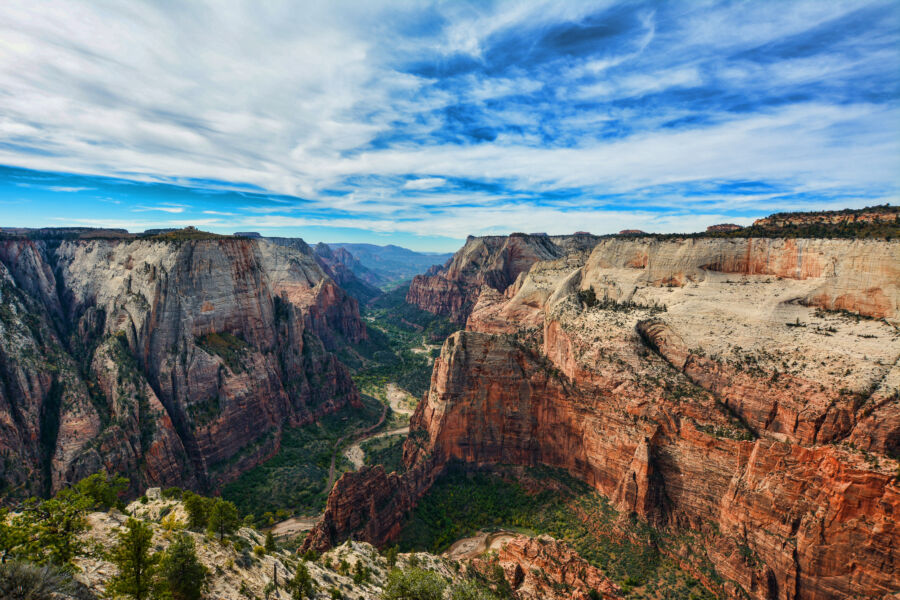
Zion offers hiking trails for all skill levels. Beginners enjoy the Pa’rus Trail, a paved path along the Virgin River. The Riverside Walk is another gentle option leading to the entrance of the Narrows.
For more challenges, Observation Point delivers stunning views after a steep climb. The famous Angels Landing trail includes the nerve-testing “chain section”—not for those who fear heights! The complete Narrows hike requires wading through water and checking weather conditions for flash floods.
Beyond hiking, Zion offers canyoneering, rock climbing, and horseback riding adventures. Many visitors try technical slot canyon explorations with guides. The park’s unique geography creates opportunities for unique experiences.
Local Communities
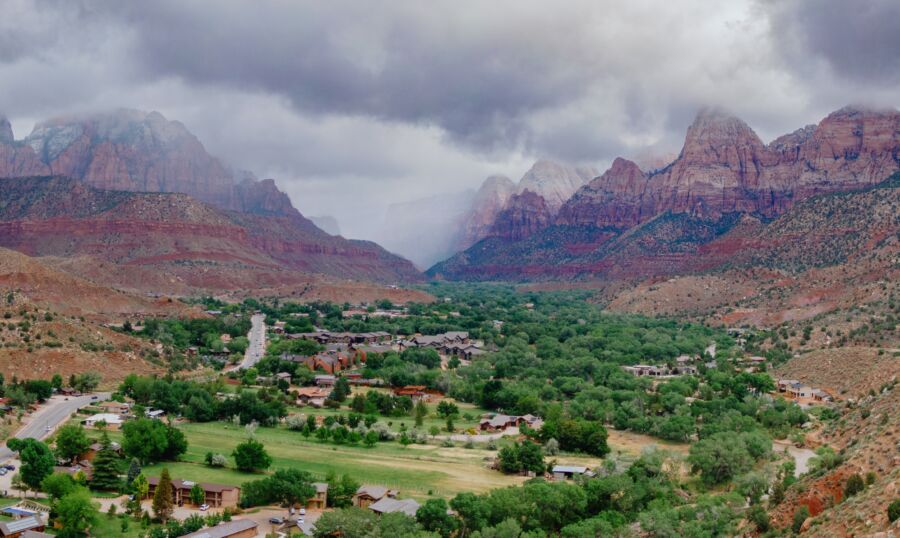
Springdale sits right at Zion’s doorstep and serves as the perfect base for park exploration. This charming town offers numerous hotels, restaurants, and shops within walking distance of the park entrance.
Local eateries serve everything from quick bites to fine dining. The Bit & Spur Restaurant and Oscar’s Cafe are local favorites. Shops sell souvenirs, outdoor gear, and local art – perfect for browsing after hiking.
Beyond Springdale, the communities of Rockville and Virgin provide additional accommodation options. Many visitors combine Zion trips with visits to nearby attractions like Bryce Canyon National Park or Grand Staircase-Escalante.
The area hosts several festivals yearly, including art shows and outdoor concerts. Local guides offer specialized tours highlighting photography spots, wildlife viewing, or stargazing experiences in this International Dark Sky Park.
Outdoor Activities and Hiking Trails
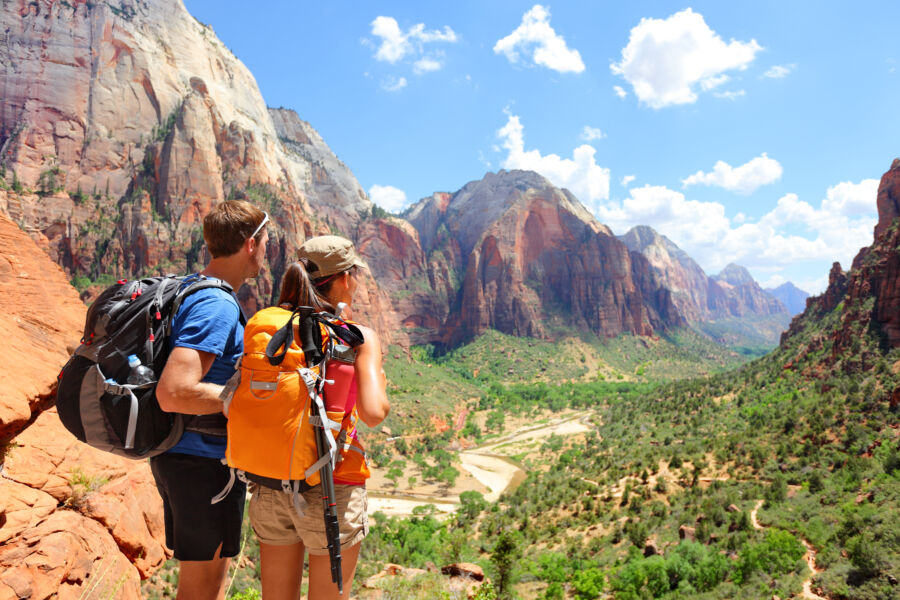
Both parks offer incredible outdoor experiences but with very different landscapes and challenges. Arches presents accessible day hikes among stunning rock formations, while Zion offers more varied terrain, from casual riverside strolls to challenging canyon adventures.
Popular Trails in Arches
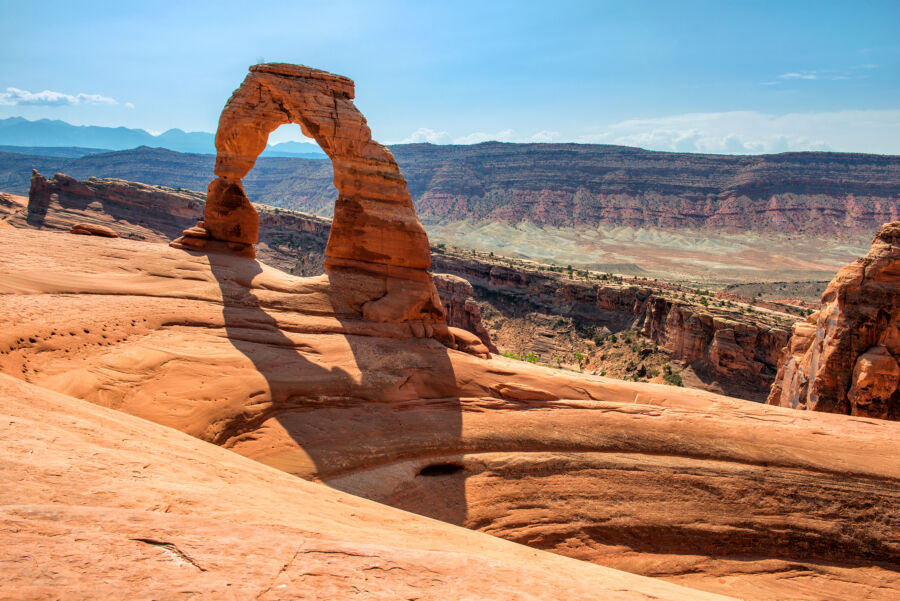
Delicate Arch Trail is the park’s crown jewel—a moderately challenging 3-mile round trip hike leading to the iconic arch featured on Utah license plates. Go early in the morning or sunset for the best photos and fewer crowds.
The Windows Section offers several short, interconnected trails perfect for families and those with limited time. In less than an hour of easy walking, you can see the North and South Windows, plus the Turret Arch.
Devil’s Garden Trail presents choices for all skill levels. The first mile to Landscape Arch is flat and accessible, but continuing the full 7.2-mile primitive loop becomes more challenging with rock scrambling and narrow ledges.
Fiery Furnace requires a ranger-guided tour or special permit, offering a maze-like adventure through narrow passages between towering sandstone walls. Book this unique experience well in advance!
Zion’s Hiking Experiences
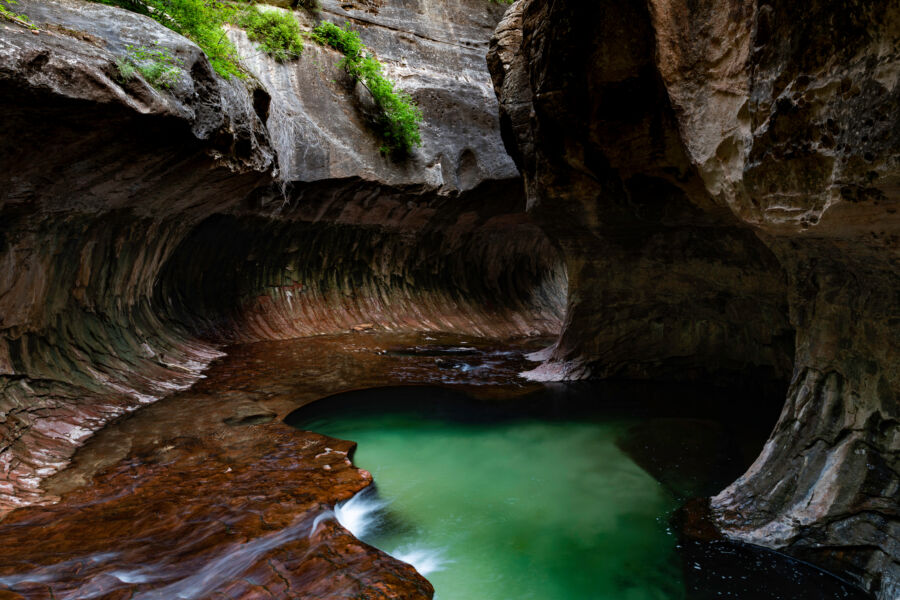
The Narrows ranks among America’s most unique hiking experiences. Wade through the Virgin River between towering canyon walls reaching 1,000 feet high. Depending on your ambition and water conditions, the hike can be as short as a mile or extend 16 miles.
Angels Landing delivers thrilling views after a challenging 5.4-mile round-trip climb with 1,500 feet of elevation gain. The final section follows a narrow ridge with chains for support—not for those who fear heights!
Emerald Pools Trails offers three interconnected options (lower, middle, and upper) ranging from easy to moderate difficulty. These family-friendly paths lead to beautiful pools and small waterfalls surrounded by red rock scenery.
Riverside Walk presents an accessible 2-mile round trip paved path following the Virgin River. It’s perfect for all ages and abilities while showcasing Zion’s dramatic scenery.
Adventure Beyond the Parks
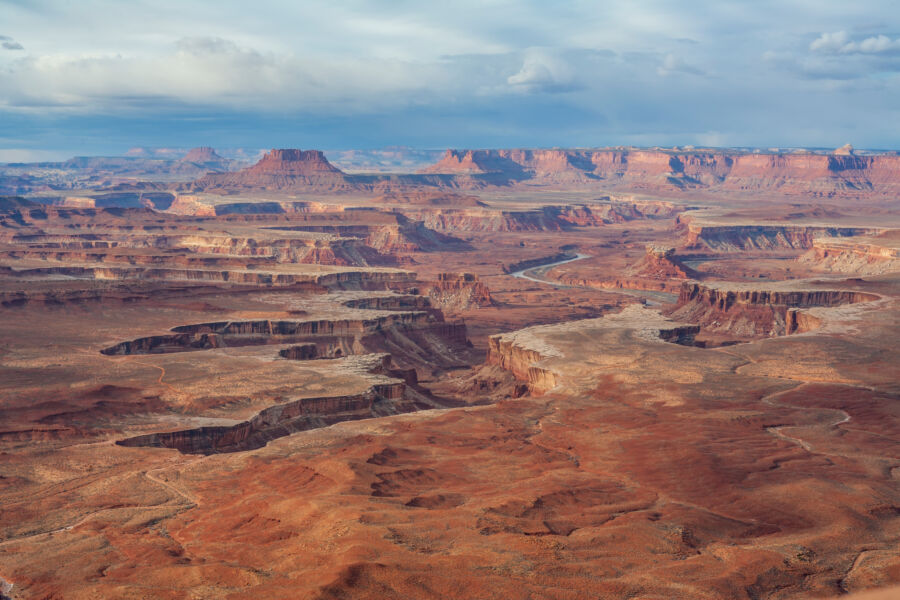
Dead Horse Point State Park sits near Arches and offers spectacular Colorado River views from 2,000 feet above. The 7-mile rim trail provides breathtaking vistas without the national park crowds.
Canyonlands National Park, just 30 minutes from Arches, features the stunning Mesa Arch—a sunrise photographer’s dream with a short 0.5-mile trail. The Grand Viewpoint hike offers expansive canyon panoramas with minimal effort.
The scenic drive between the parks is an adventure in itself. Highway 12 between Bryce and Capitol Reef offers unforgettable views.
For an alternative route between Zion and Arches, take Highway 24 through Capitol Reef for diverse landscapes. Mountain biking enthusiasts will find world-class trails around Moab near Arches, while canyoneering adventures abound near Zion with guided options for all skill levels.
See Related: Grand Canyon National Park vs Bryce Canyon National Park: Stunning Differences Every Explorer Should Know
Comparative Analysis

Both Arches and Zion National Parks offer unique experiences that appeal to different travelers. These parks contrast in their landscapes, accessibility, and visitor facilities, making each special.
Natural Beauty and Scenery
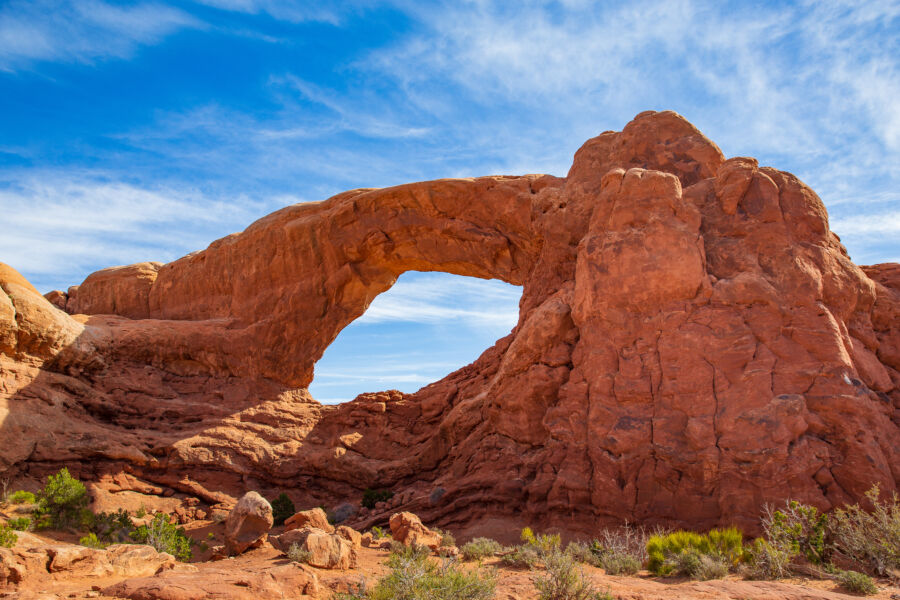
Arches National Park showcases an otherworldly landscape with over 2,000 natural stone arches, including the iconic Delicate Arch and Landscape Arch. The red rock formations and balanced rocks create a surreal, almost Martian environment. Balanced Rock is particularly impressive – a 3,600-ton boulder perched atop a narrow pedestal.
Zion, in contrast, features dramatic sandstone cliffs, narrow slot canyons, and the Virgin River valley. The park’s towering walls rise to 2,000 feet, creating a grandeur that many visitors find awe-inspiring. The varied terrain includes hanging gardens, emerald pools, and waterfalls.
While Arches offers wide-open vistas and fascinating geological formations, Zion provides more diverse ecosystems and lush vegetation along the river corridor. Photographers often prefer Zion’s dramatic lighting conditions, though Arches’ clear night skies are perfect for stargazing.
Accessibility and Crowds
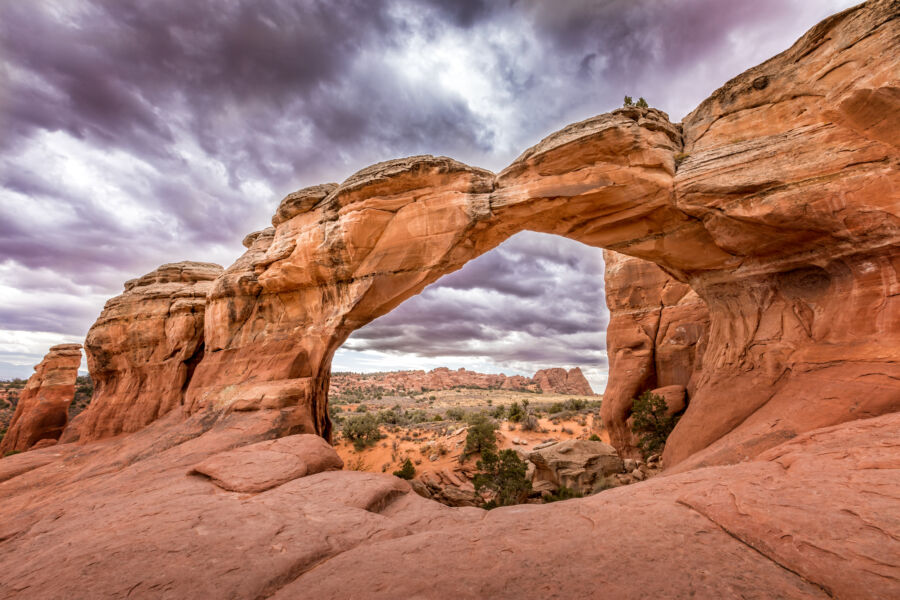
Arches features a 19-mile Scenic Drive that provides easy access to major attractions. Most viewpoints require short walks from parking areas, making it more accessible for those with mobility concerns or families with young children.
Zion operates a mandatory shuttle system during peak seasons, which can limit spontaneity but reduces traffic congestion. The park tends to be significantly more crowded than Arches, particularly during spring and fall.
Based on search results, Zion regularly experiences heavy visitation, with Springdale (the gateway town) often bustling with tourists. Arches have busy spots, but visitors can find less trafficked areas more easily.
Arches might provide more opportunities for those seeking solitude, especially in the less-visited sections of the park away from the main attractions.
Facilities and Amenities
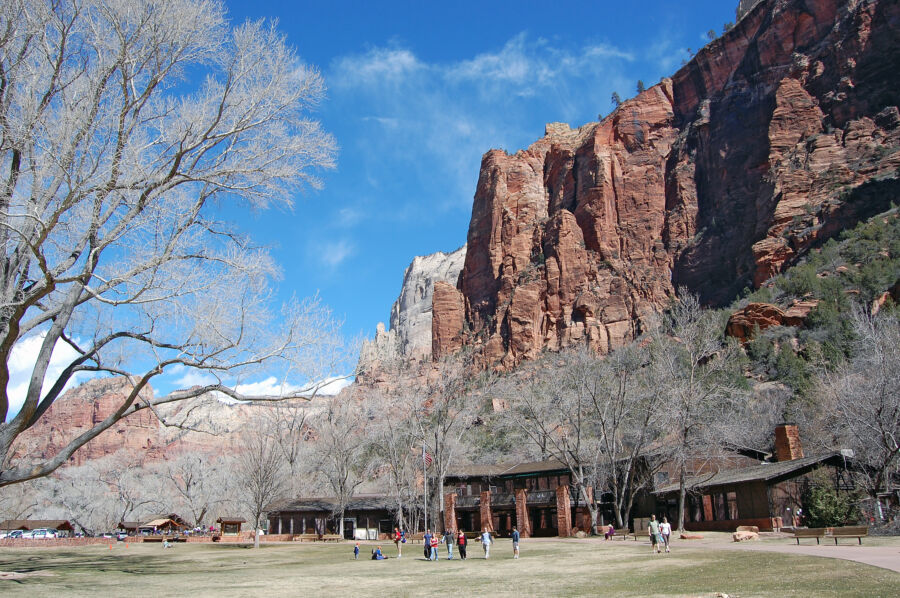
Zion offers more comprehensive facilities with multiple campgrounds, the Zion Lodge for overnight stays, and the well-developed town of Springdale right at its entrance. Visitors will find numerous dining options, gear shops, and accommodations just minutes from the park.
Arches has more limited in-park facilities with one campground and no lodge. Nearby Moab is the service hub with plenty of restaurants, hotels, and outfitters, though it’s a short drive from the park entrance.
Both parks maintain visitor centers with educational exhibits and ranger programs. Zion’s programs tend to be more numerous due to higher staffing levels and visitation.
Zion provides more varied trail options for hikers, from easy riverside walks to challenging adventures like Angels Landing. Arches’ trails tend to be shorter but still offer remarkable access to stunning formations.
Accommodation and Lodging
When planning your visit to either of these stunning national parks, where you stay can make a big difference to your overall experience. Both parks offer various options, from camping to luxury accommodations, but they differ significantly in location and availability.
Staying in Moab

Moab is the gateway city to Arches National Park and offers many accommodations. The city has everything from budget motels to luxury resorts that cater to different needs and budgets.
Many hotels in Moab feature swimming pools, which are perfect for cooling off after a hot day exploring Arches. Popular options include the Hoodoo Moab, Element Moab, and various Holiday Inn and Best Western properties.
Downtown Moab has several charming bed and breakfasts that offer a more personalized experience. During peak season (April-October), these often book up months in advance.
For longer stays, vacation rentals and condos are available throughout Moab, giving visitors more space and kitchen facilities. Booking early is essential, especially if you’re visiting during spring or fall when the weather is most pleasant.
Lodging Near Zion
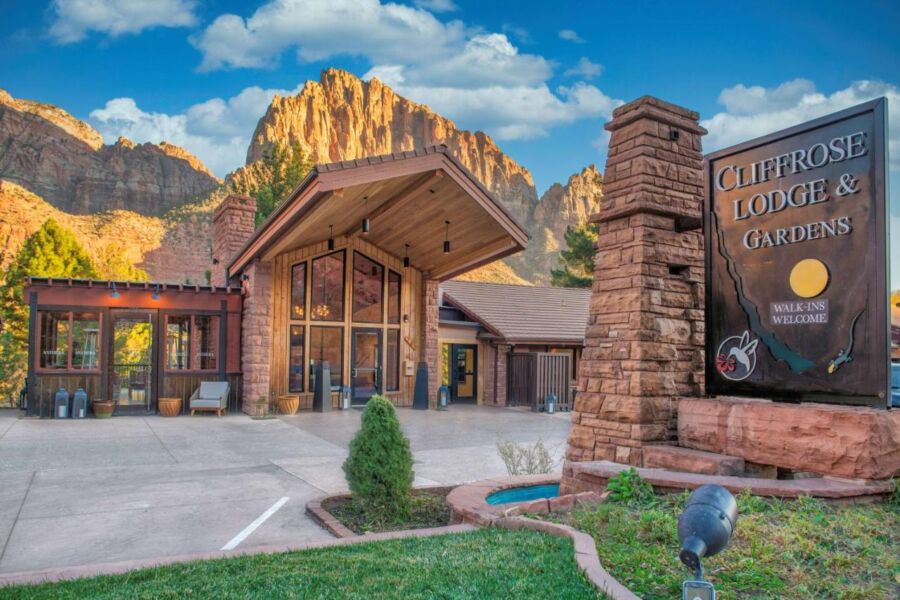
The town of Springdale sits right at the entrance to Zion National Park and offers convenient access to the park shuttle system. Most accommodations here are more expensive than in Moab due to limited space and high demand.
Springdale has several boutique hotels and lodges with stunning views of Zion’s towering cliffs. Some notable options include Cliffrose Lodge, Cable Mountain Lodge, and the historic Zion Lodge (the only accommodation inside the park).
For those on a budget, nearby towns like Hurricane and St. George provide more affordable options but require a longer drive to the park entrance.
Ruby’s Inn, known primarily for its proximity to Bryce Canyon National Park, can serve as a base for travelers with flexible itineraries to visit Bryce and Zion.
Camping Options

Both parks offer developed campgrounds with basic amenities like restrooms, picnic tables, and fire rings. Arches has one campground (Devils Garden) with 51 sites, which fills up incredibly quickly.
Zion has three campgrounds: Watchman and South, near the south entrance, and Lava Point, more remote. Watchman accepts reservations up to six months in advance and is almost always fully booked during peak season.
BLM land near Moab provides numerous dispersed camping options for self-sufficient campers seeking free alternatives. These sites lack facilities but offer more solitude.
Near Zion, private campgrounds in Springdale provide additional amenities like showers, Wi-Fi, and sometimes even swimming pools. These cost more than park campgrounds but offer greater comfort.
Travel Tips and Itinerary Planning
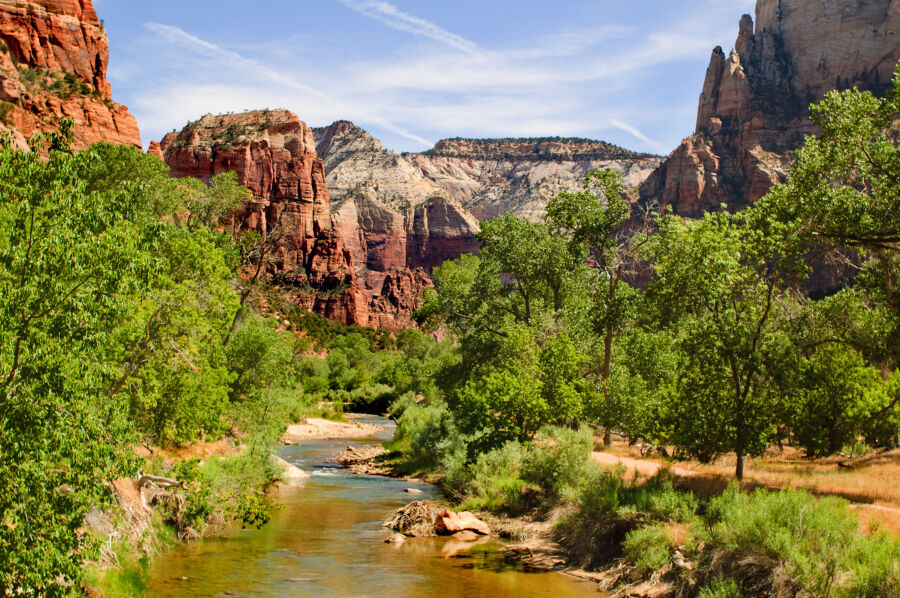
Planning a trip to these iconic Utah parks requires some preparation. Both parks offer unique experiences but have different logistics and ideal visiting times that can make or break your adventure.
Designing Your Visit to Arches
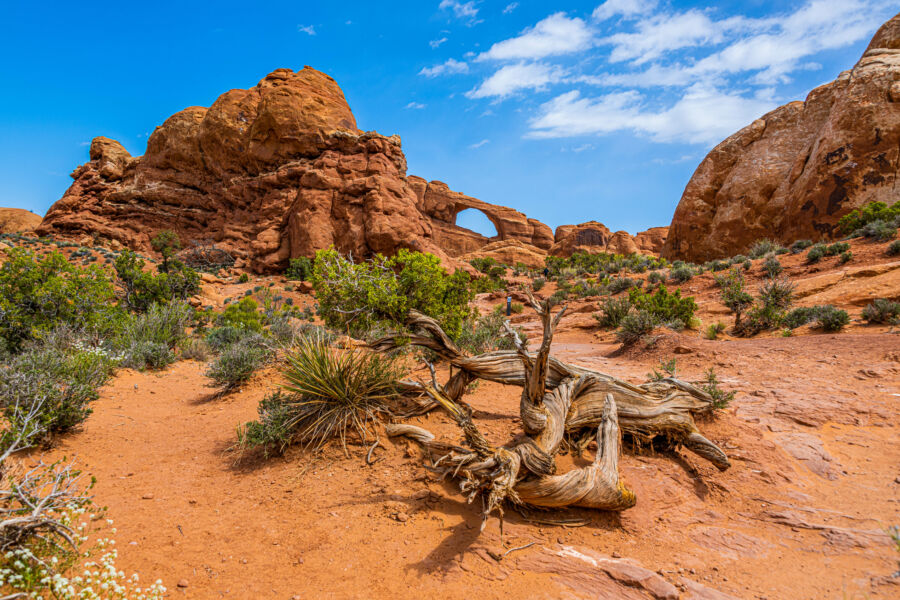
Arches National Park is best explored in the early morning or late afternoon to avoid crowds and the scorching midday heat. The park’s main road is just 18 miles long, making seeing many highlights in a single day possible.
For the best experience, grab a timed entry reservation during peak season (April through October). These sell out quickly, so book 3 months before they’re released!
Don’t miss sunrise at Delicate Arch – it’s truly magical when the soft light hits the red sandstone. Pack plenty of water and snacks as facilities are limited inside the park.
The Windows Section offers several short trails perfect for families, while Devil’s Garden provides more challenging hikes for adventurous travelers. Consider staying in Moab, which has excellent accommodation options and is a perfect base for exploring Arches and nearby Canyonlands.
Exploring Zion’s Wonders

Zion requires more time than Arches due to its shuttle system and longer trails. During peak season, the scenic drive is closed to private vehicles, so plan around shuttle schedules, which typically run from early morning until evening.
The Narrows and Angels Landing are bucket-list hikes but require preparation. Consider renting special water shoes and walking sticks for The Narrows in Springdale. Angels Landing now requires permits obtained through a lottery system.
Spring and fall offer the most pleasant temperatures. If visiting in summer, start hiking by 7 a.m. to beat both heat and crowds. Zion Lodge, located inside the park, books up months in advance but provides an incredible in-park experience.
The Zion-Mount Carmel Highway offers stunning views and is a scenic route worth driving even if you’re just passing through. Springdale has great dining options – perfect after a long day of hiking!
Surroundings and Day Trips
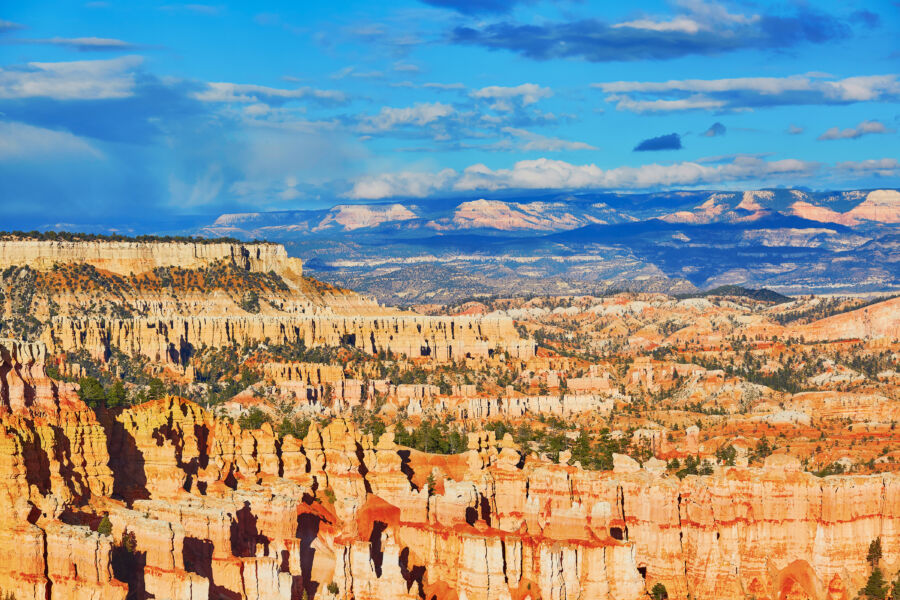
Both parks serve as excellent anchors for larger Southwest road trips. From Arches, consider a side trip to Monument Valley (2.5 hours away), where iconic sandstone buttes create an unforgettable landscape featured in countless Western films.
Las Vegas is a convenient starting point for visiting Zion (just 2.5 hours away), which can be combined with the Grand Canyon for an epic week-long adventure. The drive from Zion to Arches takes about 5 hours but passes through spectacular scenery.
Bryce Canyon National Park sits roughly halfway between Zion and Arches, making it a perfect stopover. Its otherworldly hoodoos provide a striking contrast to the landscapes of both parks.
When planning your itinerary, consider the weather carefully. Summer brings extreme heat to both parks, while winter can bring snow to higher elevations in Zion. The sweet spots are typically May and September-October when temperatures are moderate, and crowds are thinner.
See Related: Zion National Park vs Bryce Canyon National Park: Key Differences to Plan Your Ultimate Utah Adventure
Conservation and Preservation
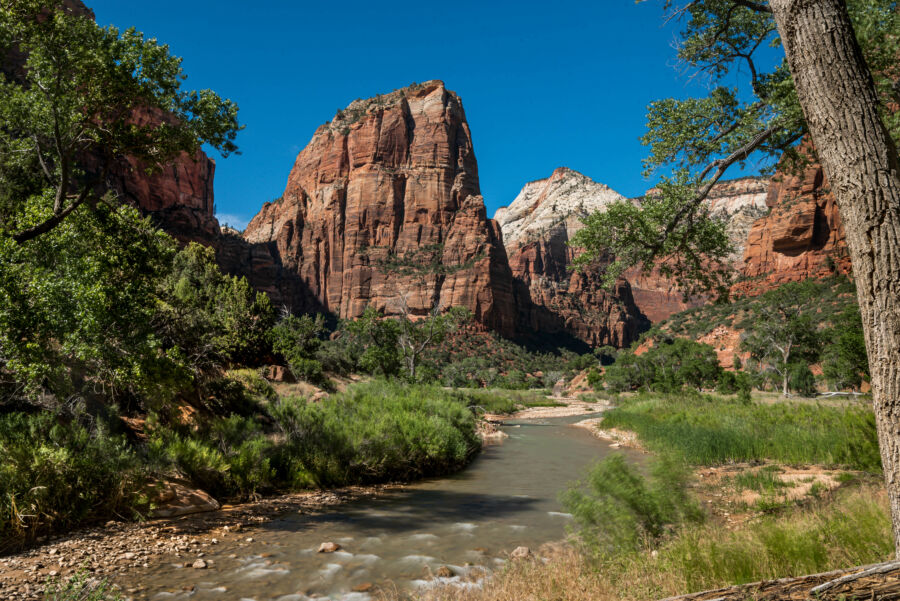
Arches and Zion National Parks face unique challenges in protecting their natural wonders while accommodating millions of visitors annually. These parks employ different strategies to maintain their fragile ecosystems and iconic landscapes for future generations.
Environment and Wildlife
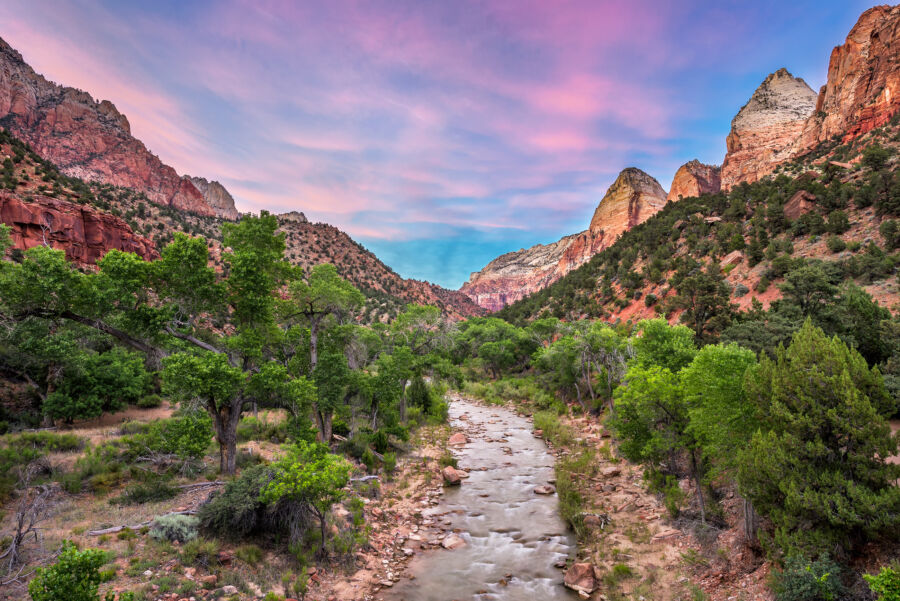
Arches National Park protects a landscape of exposed bedrock, delicate soils, and dunes. The park’s desert shrublands represent its most common vegetation community, providing habitat for desert-adapted wildlife. Park rangers actively monitor these ecosystems to track changes and address potential threats.
Zion takes a proactive approach to conservation, implementing programs that protect its diverse habitats, from deserts to riparian zones. The Virgin River ecosystem remains a critical focus of preservation efforts, as it carved the magnificent canyon and supports numerous species.
Both parks manage threatened and endangered species protection. Desert bighorn sheep roam both parks, while Zion’s unique topography supports peregrine falcons and California condors in its cliffs.
Climate change presents growing challenges for both parks. Increasing temperatures and changing precipitation patterns affect water resources and plant communities.
Visitor Impact

Both parks experience significant human impact, with millions of visitors annually. Zion implemented a mandatory shuttle system to reduce traffic congestion and air pollution in the main canyon, demonstrating innovative solutions to visitation pressures.
Arches face similar challenges with growing visitation. Trail erosion, unauthorized cairns (rock stacks), and off-trail hiking damage fragile desert soils that may take decades to recover.
Both parks struggle with:
- Parking congestion during peak seasons
- Trail maintenance needs
- Waste management
- Light pollution affecting night skies
I visited Arches last summer and was surprised by the timed entry system they’ve implemented to manage crowds. It actually improved my experience significantly compared to my overcrowded visit to Zion a few years earlier.
Park Rules and Regulations
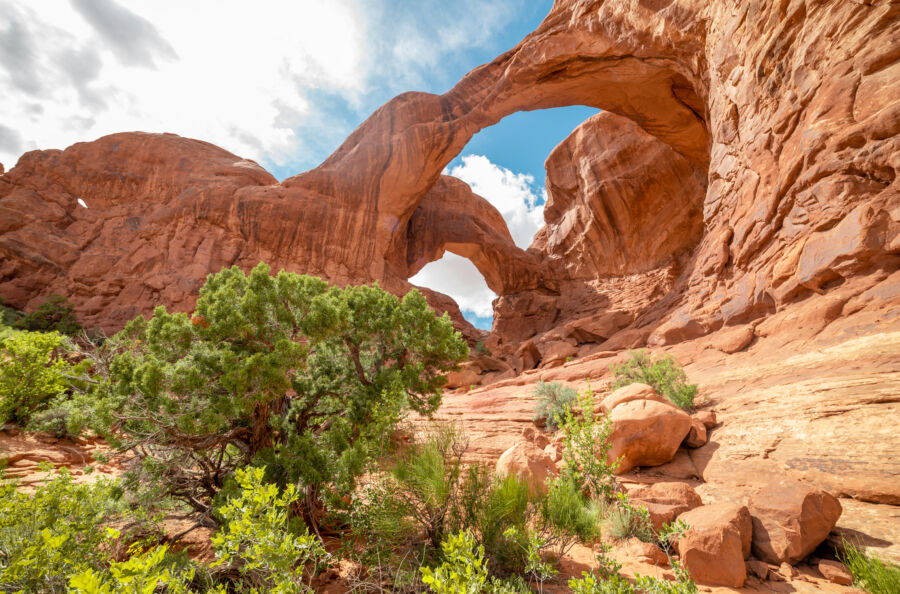
Both parks enforce strict regulations to minimize human impact. These include:
Common rules:
- Stay on designated trails
- No collecting or disturbing natural features
- Proper disposal of waste
- Pets restricted to specific areas
- No feeding wildlife
Arches specifically prohibit climbing on named arches to prevent damage to these iconic formations. Human contact can easily damage the delicate sandstone.
Zion enforces seasonal closures of certain climbing routes to protect nesting peregrine falcons and restricts access to some areas during flash flood season for visitor safety.
Both parks require permits for backcountry camping and technical activities. During my visit to Zion, I noticed rangers actively educating visitors about leave-no-trace principles, especially in high-traffic areas along the Narrows and Angels Landing.
Seasonal Events and Activities

Both Arches and Zion National Parks offer unique experiences throughout the year. The changing seasons offer visitors different opportunities to enjoy these stunning landscapes, from snowy hikes to summer stargazing.
Winter in the National Parks
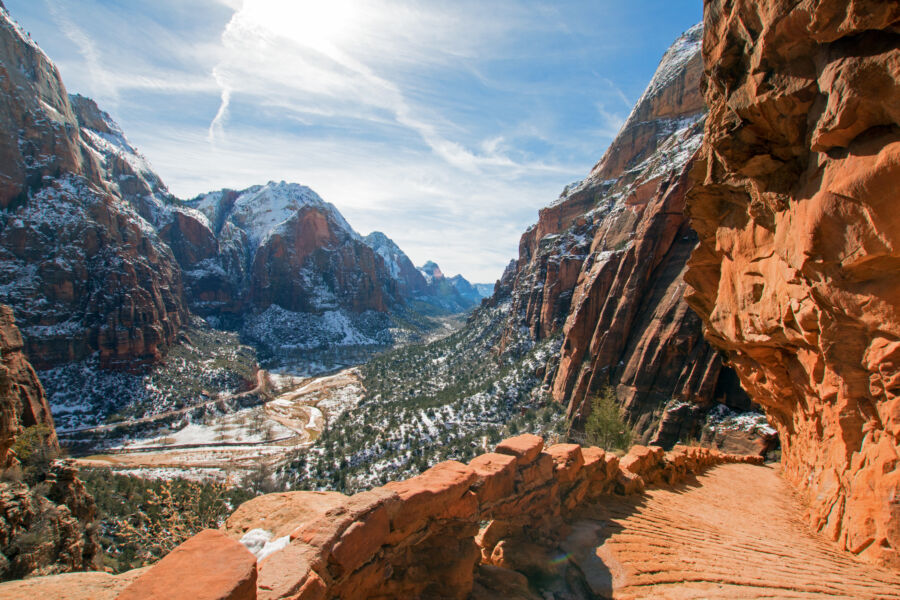
Winter transforms these parks into magical landscapes with fewer crowds. At Arches, the red rock formations look stunning when dusted with snow. Temperatures typically range from 20-50°F, making daytime hiking comfortable with proper layers.
Zion offers a different winter experience, with its canyon walls creating dramatic shadow patterns in the low winter sun. The park’s lower elevation areas often remain accessible year-round, and park rangers at Zion sometimes offer special winter programs and guided hikes during the holiday season.
Both parks have reduced services in winter. Many trails remain open, but visitors should check for ice conditions and bring traction devices. Winter photography opportunities are exceptional as the snow creates beautiful contrasts against the red rocks.
Summer Adventures
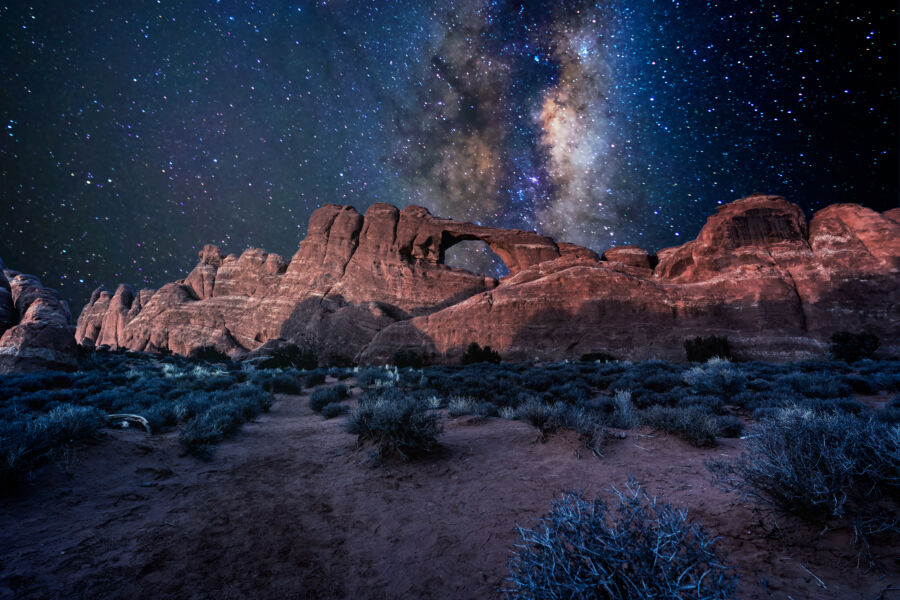
Summer brings peak visitation and expanded programming to both parks. Arches National Park offers ranger-led programs, including geology talks and evening stargazing events. The park earned the International Dark Sky designation, making summer nights perfect for astronomy programs.
Zion’s summer calendar fills with daily ranger talks, guided nature walks, and evening programs at the amphitheater. The Zion shuttle system operates fully, taking visitors to popular trailheads along the scenic drive.
Temperature differences are notable. Arches can reach over 100°F in summer, making early morning hikes essential. Zion’s varied elevation offers relief, but the canyon bottom can still get extremely hot. Both parks recommend carrying plenty of water and avoiding strenuous activities during the midday heat.
Spring and Fall Visitations
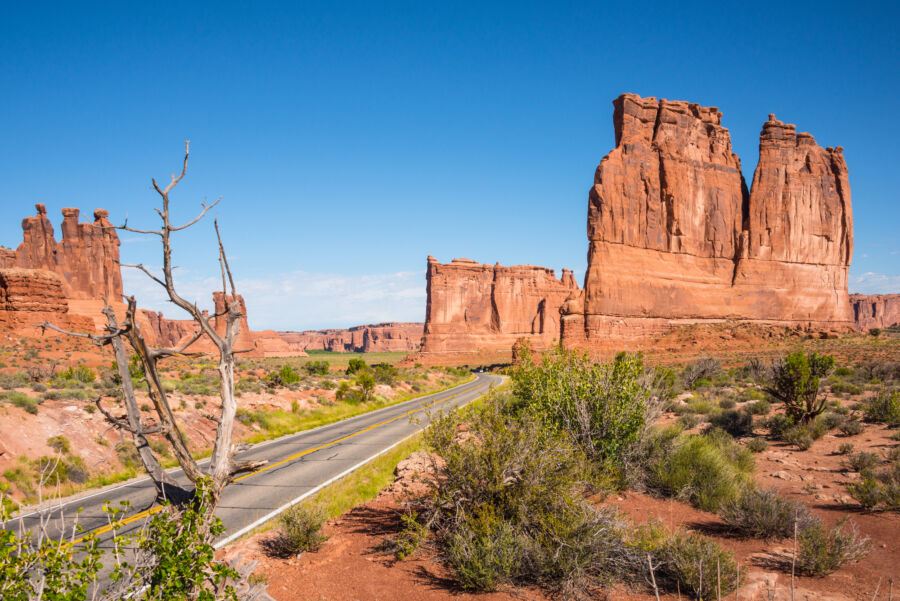
Spring and fall offer the most pleasant visiting conditions with moderate temperatures and stunning scenery. In spring, Arches showcases desert wildflowers among the red rocks. Park rangers often lead wildflower walks to identify the surprising variety of blooms.
Zion truly shines in fall when cottonwood trees along the Virgin River turn brilliant gold. The park sometimes hosts special fall photography walks to capture these colors against the red canyon walls.
Both seasons see fewer crowds than summer but more than winter. Temperatures typically range from 60-80°F, ideal for hiking and exploring. Special events like National Public Lands Day (September) bring volunteer opportunities and free admission days to both parks.
Most facilities and trails remain open during these shoulder seasons, making them perfect for visitors wanting the full experience without extreme weather or crowds.
Wildlife and Flora
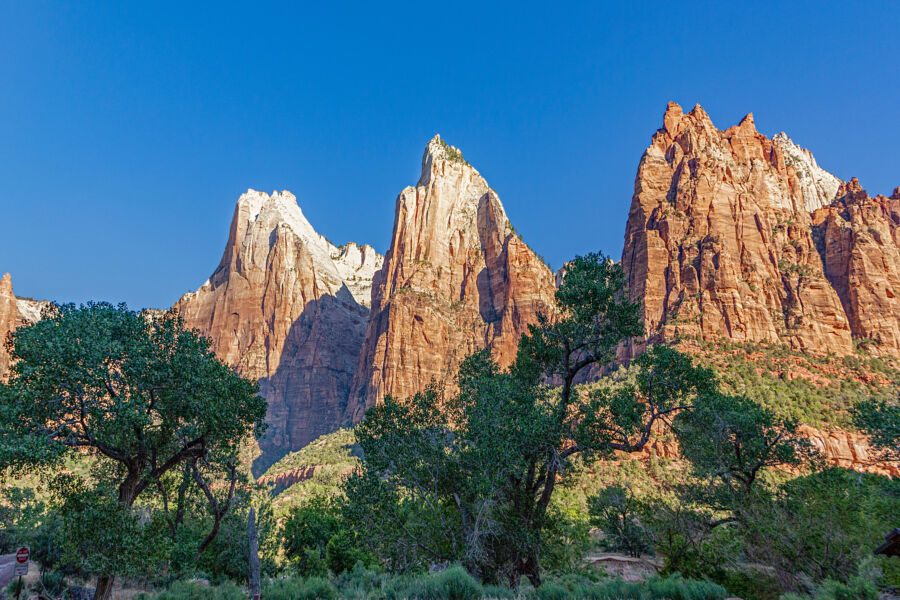
Arches and Zion National Parks offer unique ecosystems with distinct plant and animal life. Arches’s harsh desert conditions contrast sharply with Zion’s more varied landscape, creating two very different havens for wildlife.
Ecosystems in Arches
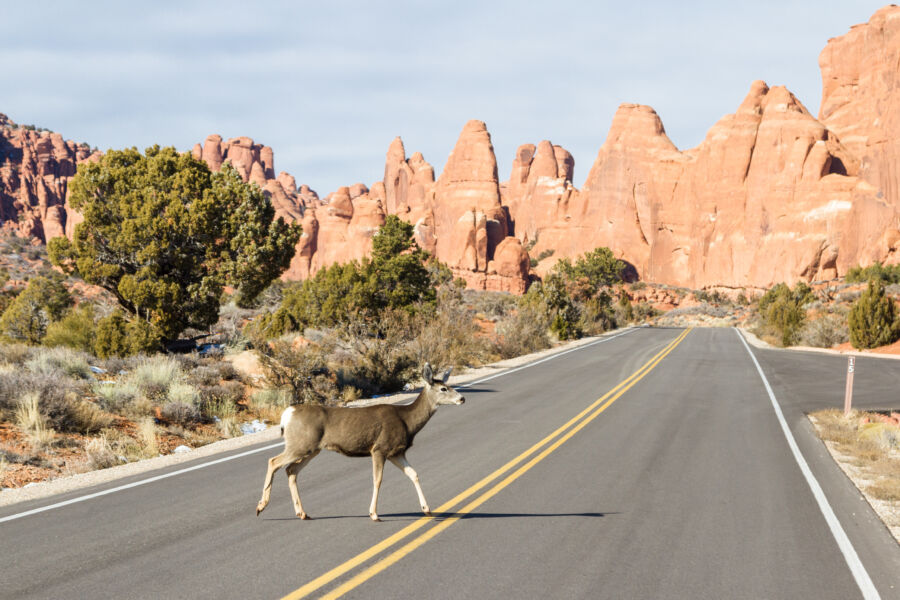
Arches National Park hosts a surprising amount of wildlife despite its harsh desert environment. Most animals here have adapted to the extreme heat by becoming nocturnal. Kangaroo rats, woodrats (packrats), and other small desert rodents emerge at night to forage. Larger nocturnal creatures include skunks, ringtails, and foxes that hunt under the moonlight.
During the daytime, visitors might spot desert cottontails or black-tailed jackrabbits seeking shade beneath juniper trees. Lizards are common sights, scurrying across the hot sandstone.
Plant life in Arches has evolved remarkable survival techniques. Drought-resistant plants like black brush, Mormon tea, and various cacti dominate the landscape. The iconic Utah juniper and pinyon pine trees create miniature islands of shade, while delicate wildflowers like globe mallow and evening primrose bring bursts of color after rare rainfall events.
Biodiversity in Zion
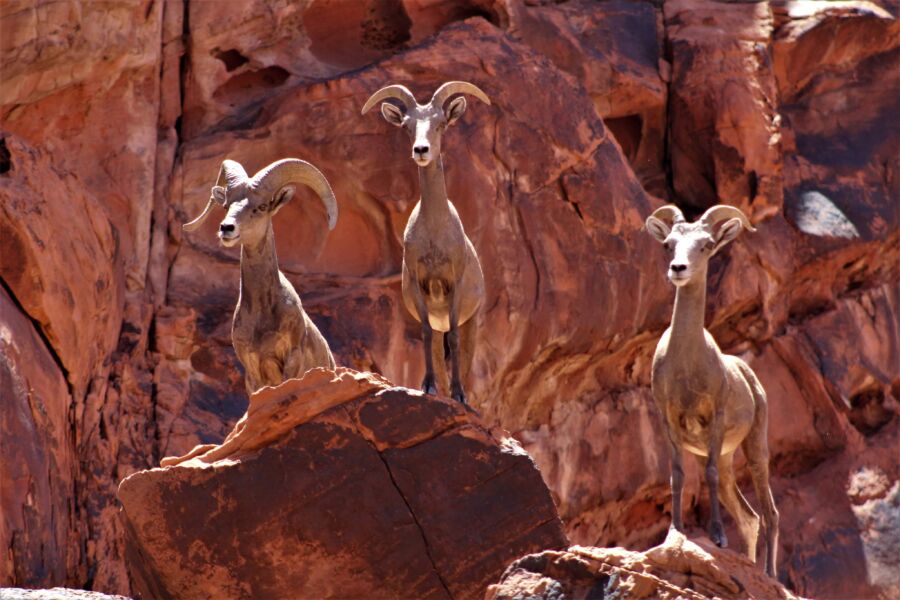
Due to its varied elevations and water sources, Zion National Park boasts significantly greater biodiversity than Arches. The Virgin River creates a riparian zone that supports cottonwood trees, willows, and abundant wildlife. This water-rich environment attracts many animals, including mule deer, wild turkeys, and numerous bird species.
The park’s diverse habitats support over 78 mammals and 291 bird species. Larger mammals include bighorn sheep navigating steep canyon walls and mountain lions rarely glimpsed by visitors. Mule deer are commonly seen grazing in meadows during early morning or evening hours.
Plant communities vary dramatically with elevation. Desert plants dominate lower areas, while ponderosa pine, aspen, and fir forests thrive at higher elevations. Spring brings spectacular wildflower displays with evening primrose, sacred datura, and scarlet monkeyflower, adding vibrant colors to the landscape.
Unique to Zion, hanging gardens form where water seeps from canyon walls, creating lush pockets of ferns, mosses, and rare plants in otherwise dry terrain.
See Related: Grand Canyon National Park vs Zion National Park: Stunning Differences to Shape Your Ultimate Southwest Adventure
Frequently Asked Questions
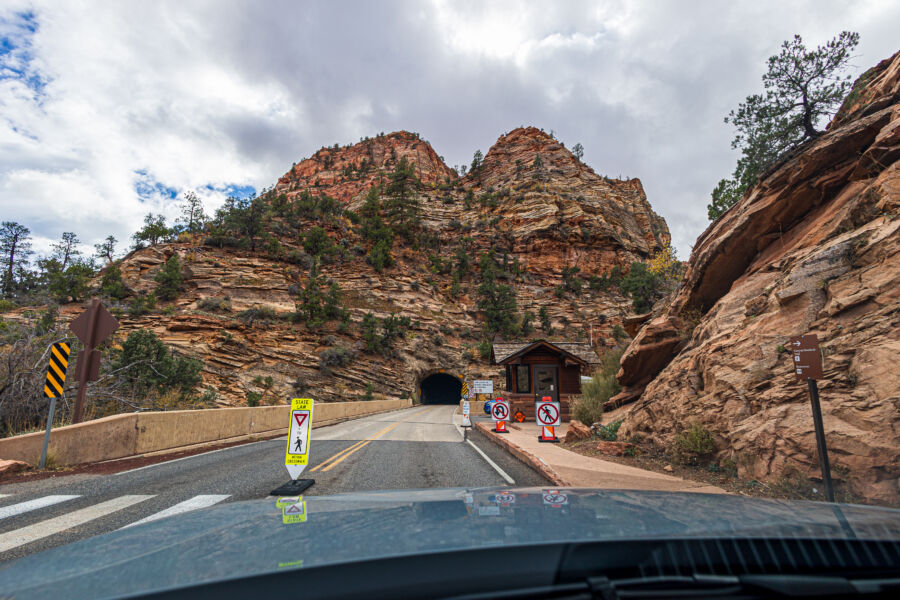
Many visitors struggle to choose between these incredible Utah national parks. Both offer unique landscapes, memorable hiking experiences, and different seasonal advantages that can make your trip unforgettable.
What are the key differences in landscapes between Arches and Zion National Parks?
Arches National Park showcases over 2,000 natural stone arches and bizarre rock formations set against a desert backdrop. The landscape features towering fins, balanced rocks, and delicate arches carved from sandstone by erosion.
Zion offers a different experience with massive canyon walls, emerald pools, and the Virgin River cutting through vibrant red rock. The park’s dramatic elevation changes create diverse ecosystems from desert to forest.
Unlike Arches’ open vistas, Zion surrounds you with towering cliffs reaching 2,000 feet. This creates a more enclosed, intimate feeling as you explore the park’s many canyons and valleys.
How does the hiking experience compare to Zion National Park and Arches National Park?
Zion provides more challenging and diverse hiking options, including the famous Angels Landing and The Narrows, which take you through water in a slot canyon. Many Zion hikes have significant elevation changes and require good fitness levels.
Arches offer generally shorter, less strenuous trails perfect for families and casual hikers. Popular trails like Delicate Arch and Double Arch provide rewarding views without requiring technical skills.
Zion requires a shuttle system during peak months, limiting where you can drive. Arches lets you drive directly to many trailheads, making it easier to see multiple attractions in a single day.
What is the best time of year to visit both Zion and Arches National Parks for optimal weather and crowd avoidance?
Spring (April-May) and fall (September-October) offer the most pleasant temperatures at both parks. These shoulder seasons provide mild weather perfect for hiking while avoiding summer crowds.
Summer brings intense heat to both parks, with Arches regularly exceeding 100°F. Meanwhile, Zion’s higher elevations offer some relief, but popular trails can become uncomfortably hot by midday.
Winter visits offer solitude but come with challenges. Zion may have snow at higher elevations but remains accessible. Arches stay relatively mild during winter days but get very cold at night.
What are the travel tips for visiting Arches and Zion National Parks on one trip?
Allow at least 4-5 days to properly experience both parks. The driving distance between them is about 5 hours, so plan a full travel day when moving from one to the other.
Use Moab as your base for exploring Arches, and stay in Springdale when visiting Zion. Both towns offer excellent accommodations and dining options right outside the park boundaries.
Consider adding nearby parks to your itinerary. Canyonlands sits 30 minutes from Arches, while Bryce Canyon is only about 1.5 hours from Zion, making them perfect additions.
Can you recommend unique activities in Arches and Zion National Parks that offer a mix of adventure and relaxation?
In Zion, try canyoneering with a guided group. This combines hiking, climbing, and rappelling through the park’s slot canyons. Afterward, relax with a peaceful picnic along the Virgin River.
Arches offers incredible stargazing opportunities due to its Dark Sky designation. After sunset, join a ranger-led night program or spread a blanket near a balanced rock.
For something different in either park, try sunrise photography. The early light creates magical effects on the red rocks. Pack a thermos of coffee and find a quiet spot to watch the landscape transform.
How do the wildlife and natural conservation efforts differ between Zion and Arches National Parks?
Due to its varied ecosystems and water sources, Zion supports more diverse wildlife. Visitors commonly spot mule deer, wild turkeys, and occasionally bighorn sheep. The park also protects several endangered species.
Arches’ desert environment hosts specialized creatures adapted to harsh conditions. Look for desert cottontails, kangaroo rats, and various lizards. Large mammals are less common here than in Zion.
Both parks face different conservation challenges. Zion works to manage heavy visitor traffic and protect water resources, while Arches focuses on preventing erosion damage to delicate formations and preserving desert plant communities.



